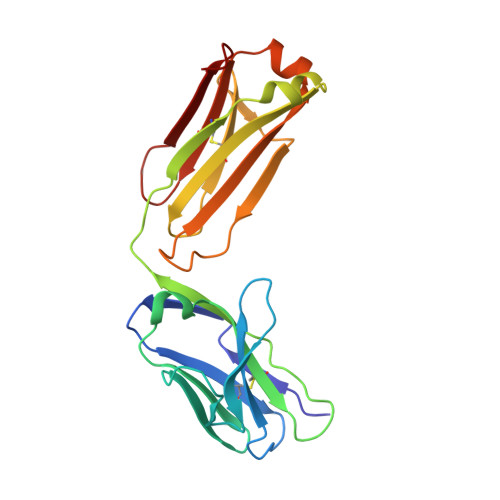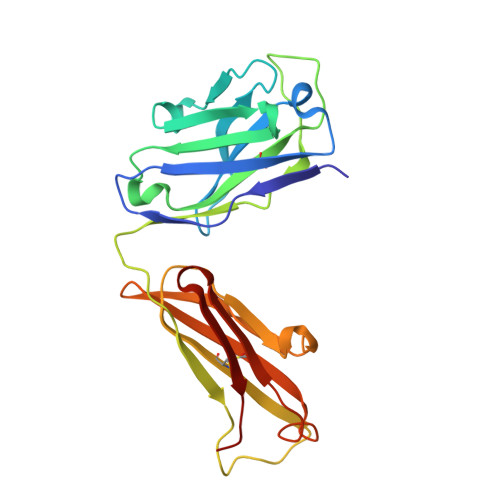An antibody as surrogate receptor reveals determinants of activity of an innate immune peptide antibiotic
Lomash, S., Nagpal, S., Salunke, D.M.(2010) J Biological Chem 285: 35750-35758
- PubMed: 20837490
- DOI: https://doi.org/10.1074/jbc.M110.150516
- Primary Citation of Related Structures:
3OJD - PubMed Abstract:
Drug discovery initiatives often depend critically on knowledge of ligand-receptor interactions. However, the identity or structure of the target receptor may not be known in every instance. The concept of receptor surrogate, a molecular environment mimic of natural receptor, may prove beneficial under such circumstances. Here, we demonstrate the potential of monoclonal antibodies (mAbs) to act as surrogate receptors for a class of innate immune peptide antibiotics, a strategy that can help comprehend their action mechanism and identify chemical entities crucial for activity. A panel of antibody surrogates was raised against indolicidin, a tryptophan-rich cationic broad spectrum antimicrobial peptide of innate immune origin. Employing an elegant combination of thermodynamics, crystallography, and molecular modeling, interactions of the peptide with a high affinity anti-indolicidin monoclonal antibody were analyzed and were used to identify a motif that contained almost the entire antibiotic activity of native indolicidin. The analysis clarified the interaction of the peptide with previously proposed targets such as bacterial cell membrane and DNA and could further be correlated with antimicrobial compounds whose actions involve varied other mechanisms. These features suggest a multipronged assault pathway for indolicidin. Remarkably, the anti-indolicidin mAb surrogate was able to isolate additional independent bactericidal sequences from a random peptide library, providing compelling evidence as to the physiological relevance of surrogate receptor concept and suggesting applications in receptor-based pharmacophore research.
- Structural Biology Unit, National Institute of Immunology, Aruna Asaf Ali Road, New Delhi 110067, India.
Organizational Affiliation:

















